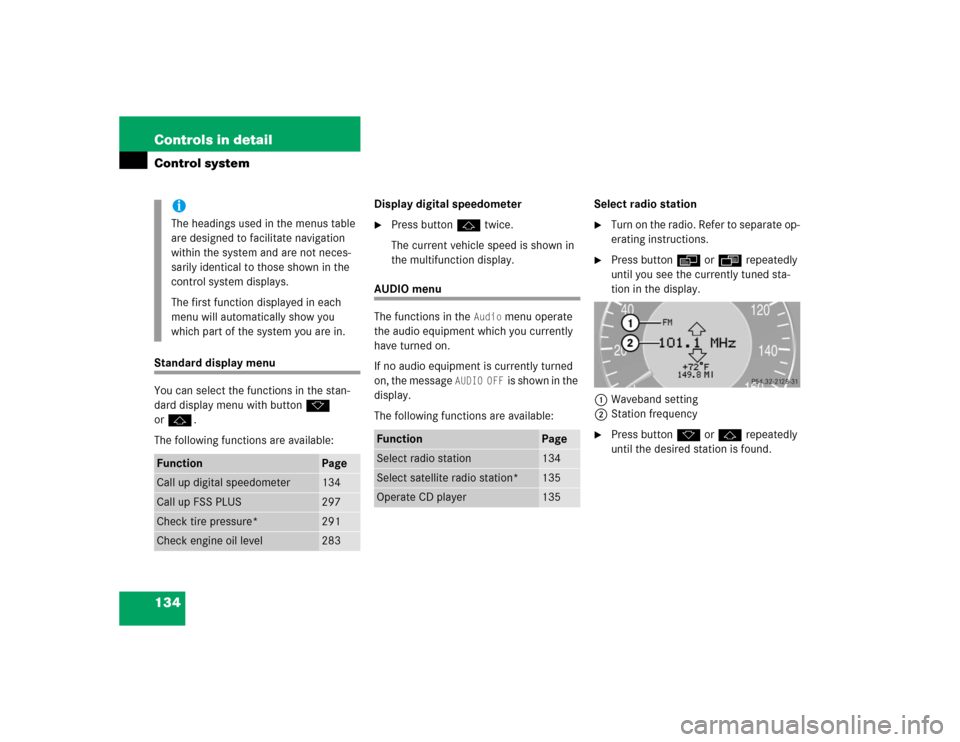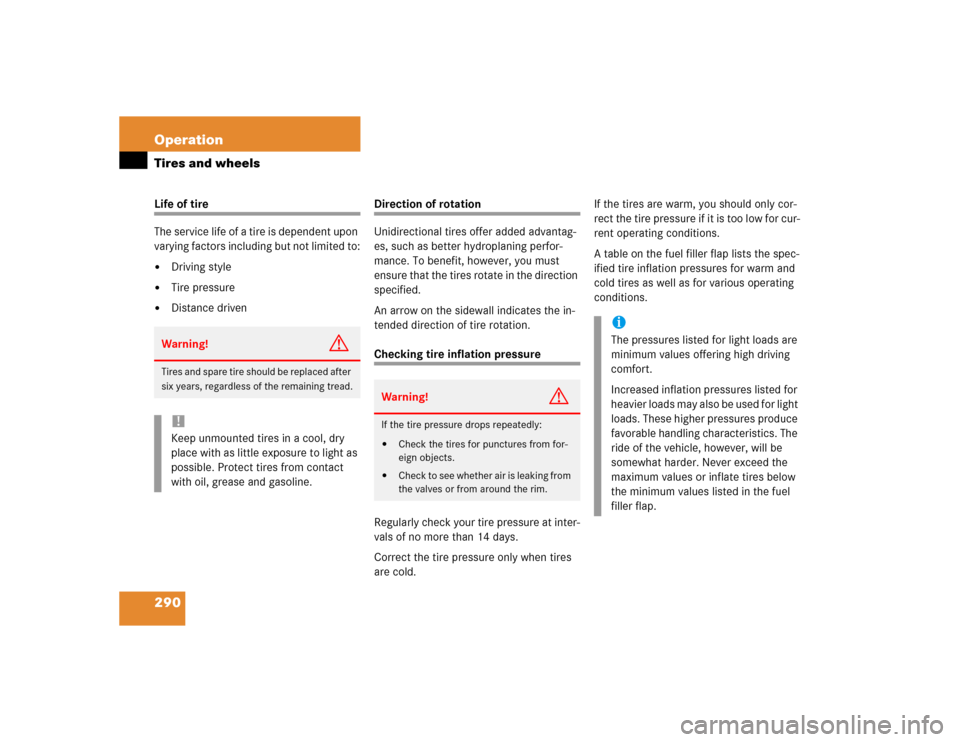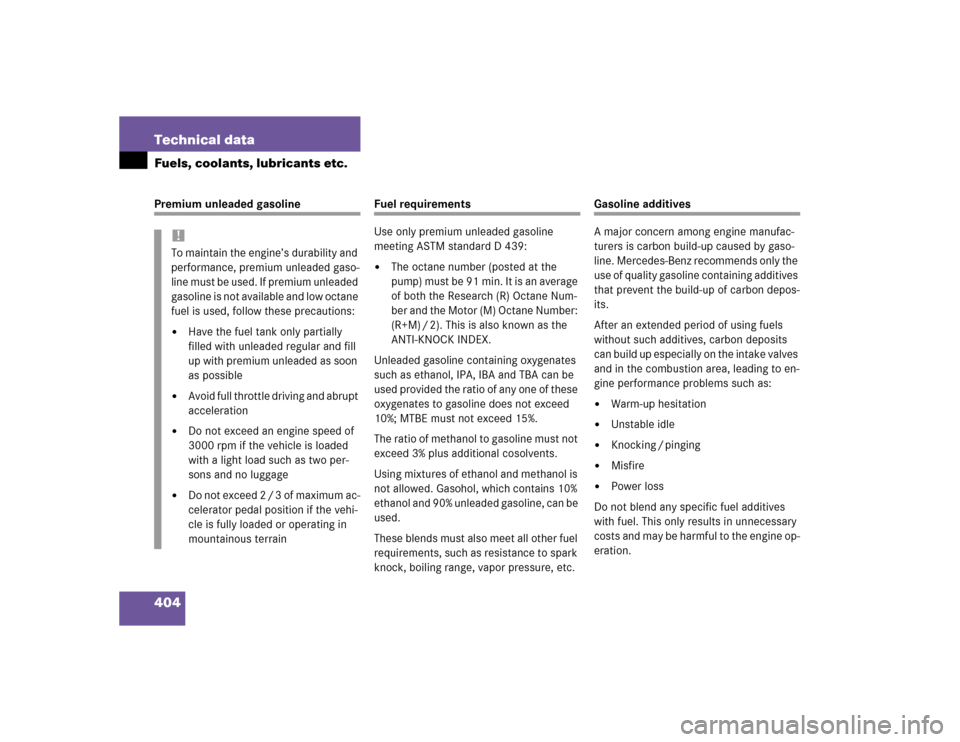Page 134 of 442

134 Controls in detailControl systemStandard display menu
You can select the functions in the stan-
dard display menu with buttonk
orj.
The following functions are available:Display digital speedometer
�
Press buttonj twice.
The current vehicle speed is shown in
the multifunction display.
AUDIO menu
The functions in the
Audio
menu operate
the audio equipment which you currently
have turned on.
If no audio equipment is currently turned
on, the message
AUDIO OFF
is shown in the
display.
The following functions are available:Select radio station
�
Turn on the radio. Refer to separate op-
erating instructions.
�
Press buttonè orÿ repeatedly
until you see the currently tuned sta-
tion in the display.
1Waveband setting
2Station frequency
�
Press buttonk orj repeatedly
until the desired station is found.
iThe headings used in the menus table
are designed to facilitate navigation
within the system and are not neces-
sarily identical to those shown in the
control system displays.
The first function displayed in each
menu will automatically show you
which part of the system you are in.
Function
Page
Call up digital speedometer
134
Call up FSS PLUS
297
Check tire pressure*
291
Check engine oil level
283
Function
Page
Select radio station
134
Select satellite radio station*
135
Operate CD player
135
Page 280 of 442
280 OperationAt the gas station
Engine oil level
More information on engine oil
(�page 282).
See also “Opening hood” (
�page 281).
Vehicle lighting
Check function and cleanliness. For more
information on replacing light bulbs, see
the “Practical hints” section (�page 359).
See also the section on the exterior lamp
switch (
�page 119).Tire inflation pressure
More information on tire inflation pressure
(
�page 290).
!If you find that the brake fluid in the
brake fluid reservoir has fallen to the
minimum mark or below, have the
brake system checked for brake pad
thickness and leaks immediately.
Notify an authorized Mercedes-Benz
Center immediately. Do not add brake
fluid as this will not solve the problem.
For more information, see “Practical
hints” (
�page 312).
Page 290 of 442

290 OperationTires and wheelsLife of tire
The service life of a tire is dependent upon
varying factors including but not limited to:�
Driving style
�
Tire pressure
�
Distance driven
Direction of rotation
Unidirectional tires offer added advantag-
es, such as better hydroplaning perfor-
mance. To benefit, however, you must
ensure that the tires rotate in the direction
specified.
An arrow on the sidewall indicates the in-
tended direction of tire rotation.Checking tire inflation pressure
Regularly check your tire pressure at inter-
vals of no more than 14 days.
Correct the tire pressure only when tires
are cold.If the tires are warm, you should only cor-
rect the tire pressure if it is too low for cur-
rent operating conditions.
A table on the fuel filler flap lists the spec-
ified tire inflation pressures for warm and
cold tires as well as for various operating
conditions.
Warning!
G
Tires and spare tire should be replaced after
six years, regardless of the remaining tread.!Keep unmounted tires in a cool, dry
place with as little exposure to light as
possible. Protect tires from contact
with oil, grease and gasoline.
Warning!
G
If the tire pressure drops repeatedly:�
Check the tires for punctures from for-
eign objects.
�
Check to see whether air is leaking from
the valves or from around the rim.
iThe pressures listed for light loads are
minimum values offering high driving
comfort.
Increased inflation pressures listed for
heavier loads may also be used for light
loads. These higher pressures produce
favorable handling characteristics. The
ride of the vehicle, however, will be
somewhat harder. Never exceed the
maximum values or inflate tires below
the minimum values listed in the fuel
filler flap.
Page 404 of 442

404 Technical dataFuels, coolants, lubricants etc.Premium unleaded gasoline
Fuel requirements
Use only premium unleaded gasoline
meeting ASTM standard D 439:�
The octane number (posted at the
pu mp ) m ust b e 91 m i n. It is an a ve ra ge
of both the Research (R) Octane Num-
ber and the Motor (M) Octane Number:
(R+M) / 2). This is also known as the
ANTI-KNOCK INDEX.
Unleaded gasoline containing oxygenates
such as ethanol, IPA, IBA and TBA can be
used provided the ratio of any one of these
oxygenates to gasoline does not exceed
10%; MTBE must not exceed 15%.
The ratio of methanol to gasoline must not
exceed 3% plus additional cosolvents.
Using mixtures of ethanol and methanol is
not allowed. Gasohol, which contains 10%
ethanol and 90% unleaded gasoline, can be
used.
These blends must also meet all other fuel
requirements, such as resistance to spark
knock, boiling range, vapor pressure, etc.
Gasoline additives
A major concern among engine manufac-
turers is carbon build-up caused by gaso-
line. Mercedes-Benz recommends only the
use of quality gasoline containing additives
that prevent the build-up of carbon depos-
its.
After an extended period of using fuels
without such additives, carbon deposits
can build up especially on the intake valves
and in the combustion area, leading to en-
gine performance problems such as:�
Warm-up hesitation
�
Unstable idle
�
Knocking / pinging
�
Misfire
�
Power loss
Do not blend any specific fuel additives
with fuel. This only results in unnecessary
costs and may be harmful to the engine op-
eration.
!To maintain the engine’s durability and
performance, premium unleaded gaso-
line must be used. If premium unleaded
gasoline is not available and low octane
fuel is used, follow these precautions:�
Have the fuel tank only partially
filled with unleaded regular and fill
up with premium unleaded as soon
as possible
�
Avoid full throttle driving and abrupt
acceleration
�
Do not exceed an engine speed of
3000 rpm if the vehicle is loaded
with a light load such as two per-
sons and no luggage
�
D o n o t e x c e e d 2 / 3 o f m a x i m u m a c -
celerator pedal position if the vehi-
cle is fully loaded or operating in
mountainous terrain
Page 420 of 442

420 IndexC
CAC (Customer Assistance Center) 411
Calling up
Distronic* settings 136
Range (distance to empty) 154
Service indicator 298
CAN system 411
Cargo tie-down rings 241
CD player
Operating 135
Center console
Lower part 26
PASSENGER AIRBAG OFF indicator
lamp 317
Upper part 25
Centigrade
Setting temperature units 141
Central locking
Automatic 106
From inside 107
Switch 107
Switching on/off (control
system) 149
Unlocking from inside 107Central locking switch 107
Changing
Batteries (SmartKey with
KEYLESS-GO*) 355, 356
Batteries (SmartKey) 355, 356
Smartkey setting 150
Vehicle level 228
Charcoal filter 192
Activating 192
Deactivating 193
Charging
Vehicle batteries 377
CHECK ENGINE malfunction indicator
lamp 313
Checking
Coolant level 285
Oil level 279, 282
Tire inflation pressure 279
Vehicle lighting 279
Child safety 65
Airbags 58
Infant and child restraint systems 62,
65
LATCH child seat anchors 71Child safety switch see Blocking of rear
window operation 72
Cigarette lighter 247
Cleaning
Headlamps 170
Light alloy wheels 305
Parktronic* system sensor 305
Windshield 49
Wood trims 308
Climate control 174
Adjusting 178
Defrosting 179
Setting the temperature 178
Clock 144
Closing
Glove box 242
Panorama sliding/pop-up roof 206
Panorama sliding/pop-up roof with
KEYLESS-GO* 209
Panorama sliding/pop-up roof* with
KEYLESS-GO* 200
Roller sunblinds 205
Side windows 198